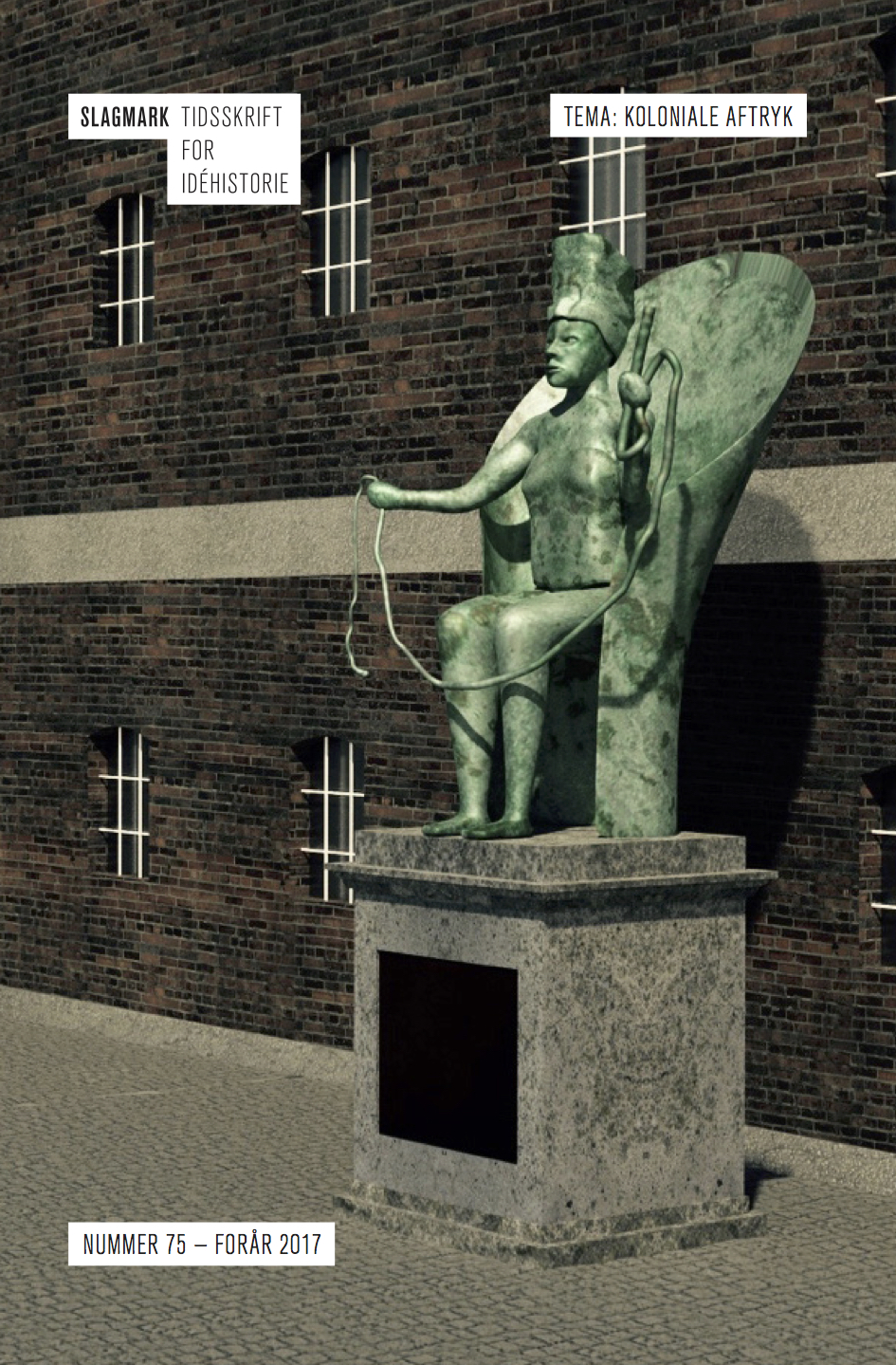Toldbodens nye dronning - den danske kolonialismes im/materielle aftryk
DOI:
https://doi.org/10.7146/slagmark.v0i75.124134Nøgleord:
memorials, collective memory, trans-Atlantic slave trade, new materialism, Danish West IndiesResumé
Through the analysis of both the direct, the derived and the non-existing imprints of Danish colonialism, the article examines the collective memory of the Danish involvement in the transatlantic slave trade. In 2017, 100 years have passed since Denmark sold its three Caribbean islands to the United States. Since then the collective memory of the Danish-West Indian past has evolved into a patriotic narrative where the Danish territorial loss is framed as a consequence of the noble abolition of the slave trade and thus turned into a moral victory. In this narrative the emphasis is placed on Danes as being the sole active agents of history.
A potentially new imprint, represented in the article by the proposed memorial statue Queen Mary, presents an alternative version of the past by highlighting the Black resistance and power. In this inversion of the colonial hierarchies of power and representation it is made clear how the cityscape of Copenhagen and the Danish historiography are constantly reproducing the patriotic narrative. Hence, the colonial past is present in Danish society today but in a way that coincides with the Danish culture and thus goes unnoticed.
Downloads
Publiceret
Versioner
- 2021-11-23 (2)
- 2017-05-30 (1)
Citation/Eksport
Nummer
Sektion
Licens
Ophavsretten til artiklerne i Slagmark deles mellem forfatter og Forlaget Slagmark.
Artikler og tekstmateriale publiceret i Slagmark må citeres, downloades og videresendes for ikke-kommerciel brug, under forudsætning af normal akademisk reference til forfatter(e) samt tidsskrift, årgang, nummer og sider.
Brug og distribution af tekstmateriale både i form af papirkopier og elektroniske kopier, til undervisningsbrug på uddannelsesinstitutioner og intern brug er tilladt efter aftale med Copydan Tekst & Node. Brugen skal ske inden for aftalens rammer.
Artikler og tekster må kun genudgives med eksplicit tilladelse fra forfatter(e) og tidsskriftet med en anerkendelse af værkets første publicering i nærværende tidsskrift.





